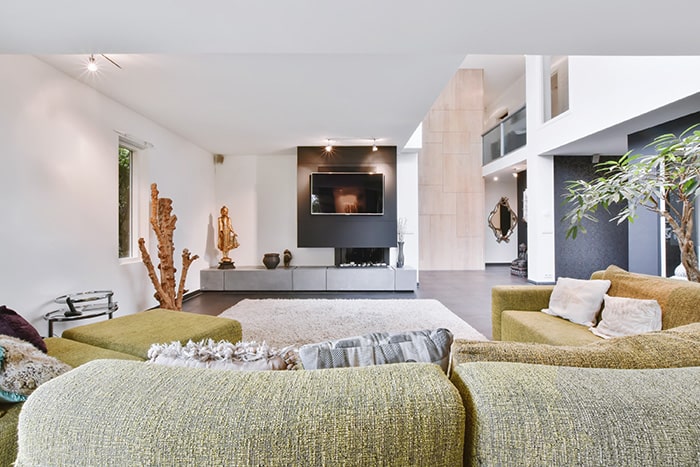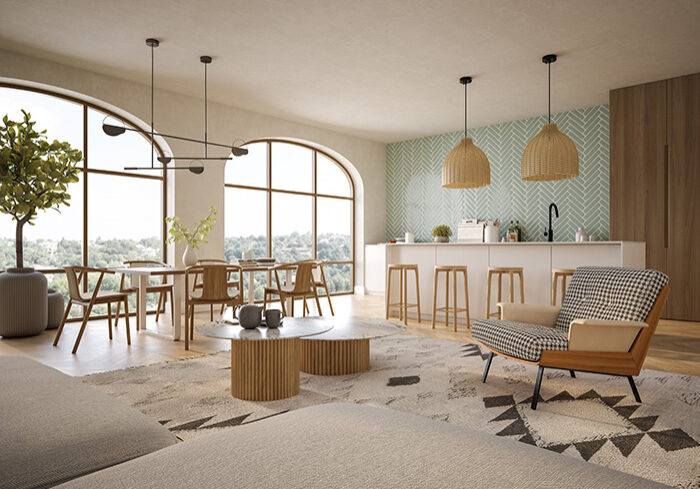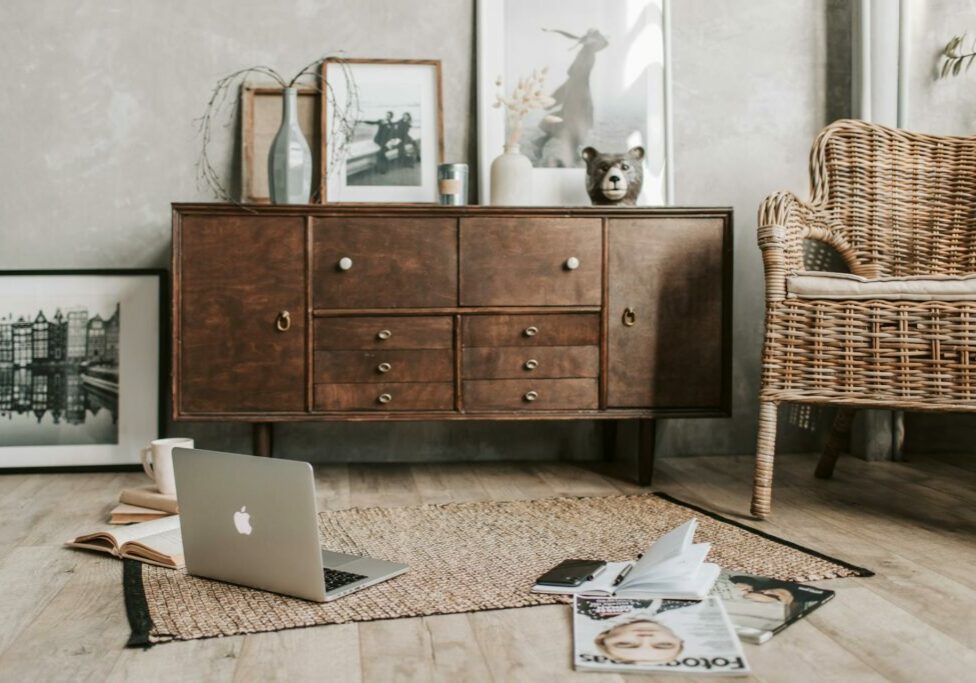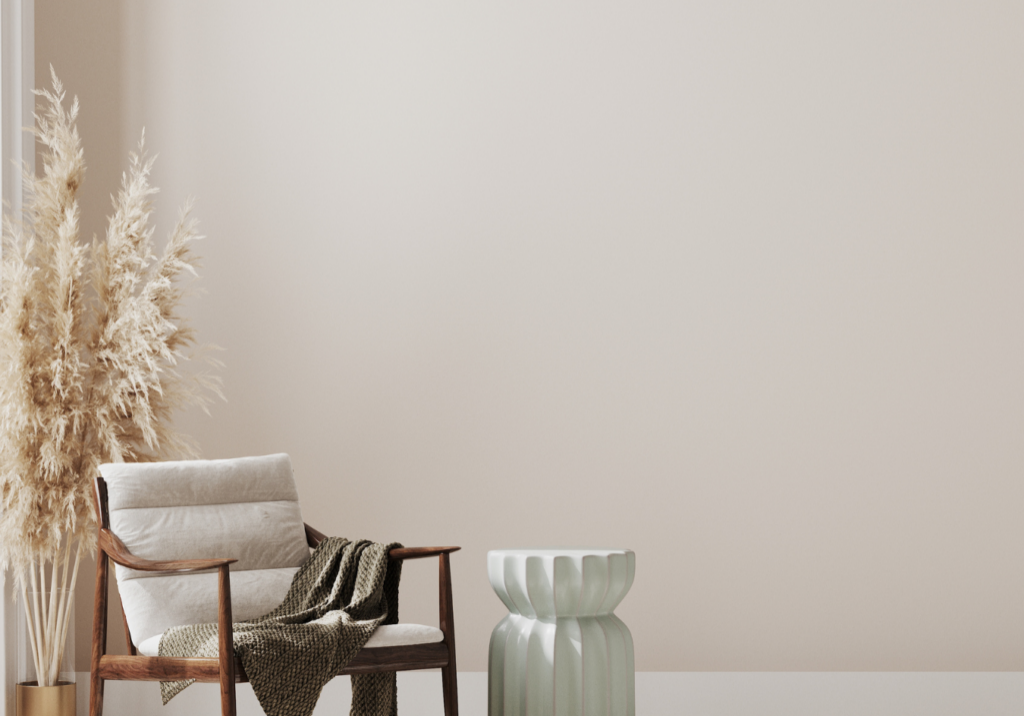Imagine this: You finalize a stunning design concept, your client is thrilled, and then… the real work begins. But instead of drowning in a sea of purchase orders and delivery schedules, you have a streamlined system that makes procurement a breeze. With the help of QuickBooks for interior designers, you can confidently manage orders, build strong vendor relationships, and keep projects running smoothly, all while staying focused on your creative vision. This is the power of effective interior design procurement.

The Real Talk About Procurement
Your latest client just approved your design concept. The 3D renderings look perfect, the color palette is divine, and the custom pieces you’ve selected will make the space absolutely stunning.
Procurement is everything that happens between that gorgeous rendering and your final reveal. Think custom furniture orders, vintage piece hunting, delivery coordination, and making sure everything arrives looking as perfect as it did in your head. When it all comes together, you’re the design expert who turns mood boards into masterpieces. When it doesn’t? Well, let’s just say no amount of perfectly placed throw pillows can fix a sofa that arrives in the wrong colour fabric.
Building Your Procurement Foundation
Before you get into ordering that perfect custom sofa, you need a solid system that works for everything from throw pillows to grand chandeliers. Think of it as creating your design process, but for the business side.
Your Essential Workflow
Here’s what a rock-solid procurement process looks like:
- Document everything – and I mean everything. That gorgeous blue isn’t just blue; it’s “Azure Mist in a herringbone weave with stain protection.” Write. It. All. Down.
- Get those approvals in writing. Think of it as insurance for your sanity. When your client says, “But I thought the sofa was going to be velvet!” you’ll have the receipts to prove otherwise.
- Create detailed purchase orders. Yes, they’re boring, but they’re your best friend when that custom piece arrives and something’s not quite right. Think of them as the construction documents of procurement – detailed, specific, and absolutely necessary.
- Track your orders like you’re watching a package with next-day delivery status.
- Plan deliveries like you’re arranging a design showcase – every detail on schedule.
Beyond the Basics
Having a checklist is great, but understanding why each step matters is what separates the design stars from the rookies. Think about what happens when details slip through the cracks: that sofa arrives with the pattern running the wrong way, or the “perfect” wallpaper shows up three shades off from the sample. These aren’t just hiccups, they’re the kind of issues that can derail your entire timeline.
Here’s a situation every designer should avoid: Imagine trusting online photos for a custom dining table finish. What looks like a perfect “warm walnut” on screen could arrive looking completely different in your client’s space – think more “left-in-the-sun orange.” This is why experienced designers always insist on physical samples.
Creating Strong Vendor Partnerships
Think of your vendors as your design team’s extended family, without the drama of holiday dinners. These relationships can make or break your projects, and building them takes more than just placing orders and crossing your fingers.
Building Relationships That Last
Strong vendor relationships prove their worth when you need that rush order on a custom piece, or when something arrives damaged and needs immediate attention. Having these solid partnerships is worth its weight in gold-leafed accessories, and here’s why: your trusted vendors become allies in making your design vision come to life. They’ll go the extra mile when you need it, share insider knowledge about upcoming collections, and maybe even give you first dibs on those perfect vintage pieces.
Communication That Works
Clear communication with vendors is like the design equivalent of “measure twice, cut once.” Every conversation, every specification, every timeline matters. Here’s what makes vendor communication work:
- Keep everything in writing. Those quick phone calls about changing the finish? Follow up with an email. Future you will be thanking past you when questions come up three months later.
- Follow up faster than you respond to a sample sale notification. Seriously. The quicker you address questions or concerns, the smoother your project will flow.
- Share timeline expectations early and often. Your vendors can’t work miracles (usually), but they can work wonders when they know what you need and when you need it.
- Be as specific about changes as you are about paint colors. “Sort of like the sample but warmer” isn’t going to cut it. Detail is your friend here.
Money Matters
Sure, it’s not as exciting as sourcing the perfect piece, but procurement finances are what keep those dream projects coming.
The Costs You See
Think of your costs like a well-planned room layout: you’ve got your statement pieces, the big costs, and your accessories, the smaller ones.
The obvious costs are like your focal points:
- Product wholesale prices
- Shipping and freight
- Storage fees
- Insurance
The Costs You Don’t
Here’s where it gets interesting, there are hidden costs that you might not spot at first:
- All that time spent chasing orders adds up faster than fabric samples in your studio. Those endless email chains with vendors about order status? That’s time you could be spending on actual design work.
- Problem-solving sessions become impromptu team meetings when something goes wrong. They might not show up on an invoice, but they’re costing you just the same.
- Then there’s all those coordination calls with delivery teams, those urgent update emails to clients, and the time spent tracking down answers about delayed orders.
Keeping Track Without Losing Your Mind
Balancing dozens of orders while making it all look seamless to your clients? Welcome to procurement tracking. But don’t worry, we’re about to turn that chaos into something manageable.
Before You Order
Think of this phase as your design concept – get it right, and everything else flows. Just like you wouldn’t start installing furniture before the walls are painted, you need to nail down certain elements before placing those orders:
- Lock in those client approvals before you even think about clicking “submit order”
- Double-check every spec like you’re reviewing wallpaper matches at the seams
- Confirm pricing faster than you can say “custom upholstery”
- Do those availability checks, because nobody likes surprising their client with a 6-month wait time
During the Order Process
This is your project management phase, and it needs as much attention as your design presentations:
- Keep those purchase order numbers organized
- Track lead times like they’re trending design forecasts
- Stay on top of deposit payments
- Monitor production updates
Pro Tip: Create a tracking system that works for your brain. Maybe it’s color-coded spreadsheets, maybe it’s project management software, or maybe it’s a combination of both. Whatever helps you sleep at night!
Delivery and Installation Phase
This is your big reveal, where vision becomes reality. It needs to be coordinated like an editorial shoot:
- Track those shipping numbers obsessively
- Know your warehouse arrival dates
- Schedule deliveries with military precision
- Coordinate installation like you’re conducting an orchestra
Quality Control That Makes You Look Good
Quality control in procurement is like lighting in design, when it’s good, everything looks better. When it’s bad…well, let’s not go there.
Initial Selections
Think of quality control as your insurance policy against “what happened?” moments:
- Get those samples!
- Keep records of your wins, and the products that got you there.
- Test materials
Pro Tip: Create a “greatest hits” binder of your favorite reliable products. Future you will be so grateful!
Double-Checking Details
Channel your inner perfectionist here:
- Measure everything twice
- Confirm finishes and fabrics like your reputation depends on it
- Triple-check those quantities
- Note any special requirements, because “standard” rarely is
Managing Client Expectations Like a Pro
We’ve all been there, that moment when a client’s eyes widen at a lead time or they gasp at a shipping cost. Managing expectations isn’t just about avoiding surprises; it’s about creating trust and showing your professionalism.
Setting the Stage
Think of client management as your design reveal strategy. No one likes surprises, unless they’re the “we got it in early!” kind. Here’s how to nail it:
- Walk them through your process like you’re giving a design presentation. Paint the picture of how their beautiful space will come together, timeline and all.
- Create a timeline they can visualize. Sometimes clients need to see it to believe it.
- Be upfront about what could go wrong, but frame it in a “we’ve got this covered” way.
- Set realistic expectations about lead times, and then add two weeks… trust me on this one.
Creating Clear Agreements
Your service agreement should be as carefully curated as your design schemes:
- Spell out your procurement fees
- Make your markup policies crystal clear
- Explain return limitations
- Detail your damage policies
Documentation That Saves You
Keep records better than you keep your fabric samples organized:
- Save every client’s approval
- Document change requests meticulously
- Keep that communication history pristine
- Update timelines whenever they shift
Tech Tools That Actually Help
We’re not talking about complicated systems that require an IT degree. We’re talking about tools that actually make your life easier.
Software That Makes Sense
Let’s talk tech that doesn’t make you want to throw your computer out the window:
- Project management tools that actually work for designers
- QuickBooks mapping that makes financial tracking painless
- Accounting software that speaks your language
- Order tracking systems that don’t require a PhD to use
Automating the Boring Stuff
Because your time is better spent on actual design:
- Set up templates for everything – seriously, everything
- Use tools that talk to each other – like Houzz Pro and QuickBooks
- Automate your follow-ups
- Create systems for repetitive tasks
Many use QuickBooks Online Accounting with Ivy/Houzz Pro for Interior Designers to manage these details. This combination helps you track both the financial and logistical aspects of your orders in one place
When Things Go Sideways
Even with the best systems in place, sometimes things just don’t go as planned. It’s not about if something will go wrong, it’s about how gracefully you handle it when it does.
Common Problems and Quick Fixes
Because stuff happens, even to the best of us. Having a game plan for common issues can turn a potential disaster into a minor inconvenience:
- That perfect piece gets discontinued right after your client falls in love with it? Have backup options ready that capture the same vibe.
- Lead times suddenly double? Communication is your best friend – be transparent with your client and have a Plan B ready. Hope for the best, but plan for the rest.
- Custom items arrive not-so-custom? Document everything the moment it arrives and know your vendor’s claims process like the back of your hand.
Dealing with Delays
When “it’s coming soon” becomes “maybe eventually”:
- Get the real scoop from your vendor
- Have a Plan B (and C, and maybe D)
- Keep your client in the loop
- Consider temporary solutions that won’t make you cringe
Damage Control
When things literally need damage control:
- Document faster than you can say “shipping claim”
- Take photos from every angle
- File those claims ASAP
- Keep your client updated, but wait until you have solutions
Growing Your Procurement Game
Ready to take your procurement process to the next level? Whether you’re handling more projects or bigger ones, scaling up needs strategy.
Scaling Up Smartly
Ready to level up? Let’s do it right:
- Analyze what’s working and what isn’t
- Identify your time-wasters
- Find tasks you can delegate
- Build systems that grow with you
Building Your Dream Team
Because even design superheroes need sidekicks:
- Start with what you can’t stand doing
- Train your team on your systems
- Share your vision
- Delegate but don’t disappear
Pro Tip: Your procurement team should run as smoothly as your design presentations look!
The moment you have approvals and deposits, time is never on our side in this industry.
Remember, procurement might not be the glamorous side of design, but it’s what turns your gorgeous plans into reality. Master this, and you’ll be unstoppable!
Ready to Make Procurement Painless?
At Logistis for Designers, we turn procurement chaos into streamlined success. Our team handles all the behind-the-scenes details – from purchase order management to vendor coordination – so you can focus on what you do best: creating beautiful spaces.
Want to learn how we can help transform your procurement process?
- Schedule a free consultation
- Get a custom procurement solution for your design business
- Join other designers who’ve simplified their procurement process
Contact us today to discover how we can help make the business side of design as beautiful as your creative work.
The Designer’s FAQ Corner
What exactly is interior design procurement?
The process of purchasing, tracking, and managing all items for your design projects, from furniture to fixtures to accessories.
What’s a typical markup on products?
Most designers charge between 20-35% markup on products, depending on their market and service level..
When should I start the procurement process?
Begin as soon as you have signed approvals and deposits from your client. Earlier is always better with today’s lead times.
Do I need special software for procurement?
While you can start with spreadsheets, dedicated project management software like Houzz Pro can streamline your process significantly.
How do I handle damaged items?
Document with photos immediately upon delivery, file a claim with the vendor right away, and have a backup plan ready for your client.
What should I do if a vendor discontinues an item after the client approves it?
Always have 2-3 backup options ready and include a substitution clause in your agreement for these situations.
Share On:



